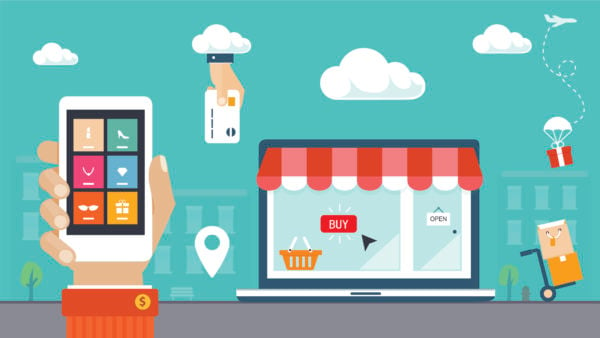Get Your Retail Fulfillment Channels Integrated

As we approach 2021, you’ll see more retailers not only embracing omnichannel retailing, but also rethinking the entire physical-digital customer experience. It’s the result of the dramatic shift in retail fulfillment when stores closed in March 2020. Suddenly, it wasn’t enough to just provide powerful digital experiences online and from any device. Successful retailers were the ones that were able to marry their digital assets to their physical ones, leveraging all of their inventory — whether it was in stores, distribution centers (DCs) or a combination of both — and offering multiple fulfillment options in a timely manner via buy online pickup in-store, curbside pickup or a pickup locker.
In my last blog, How to Prepare for the Future of Retail Logistics, I discussed the need from more retailers to get their supply chain infrastructure set up correctly to optimize business performance and improve service to customers. Your supply chain infrastructure is key in your ability to deliver the best customer experiences when it comes to fulfilling orders and expectations. Specifically, is your infrastructure set up to connect all your retail fulfillment channels and seamlessly add new channels as market conditions change?
Let’s dive deeper into why it’s important to integrate your retail fulfillment channels in order to support customers shopping from channel to channel.
The Purpose of Your Physical Stores Has Changed
For many traditional brick-and-mortar retailers, this is a hard concept to grasp. But the rules of the game in retail were forever changed this year and in order to stay relevant, retailers must step outside their safe space and challenge old ways of thinking.
In 2021, you can’t expect to pick up where you left off in 2019 – even though EVERYONE wants to pretend 2020 never happened. The physical retail shopping experience that you ran for decades no longer exists. Instead, reimagine your physical stores as a place that provides the phygital experience of interacting with products.
Earlier this year in an article retail futurist Doug Stephens stated, “As consumers become increasingly technologically entrenched, they’ll crave far more and better physical retail experiences. And so brick-and-mortar spaces will offer retailers and brands the opportunity to draw the consumer into the brand story, deliver a remarkable and immersive brand and product experience, and ultimately galvanize their relationship with consumers. A relationship that can then live across multiple buying channels.”
Additionally, it may be time to reimagine your physical stores into local retail fulfillment centers for online orders. That includes picking, packing and shipping from the store, in addition to click-and-collect and returns. Important to note, when you treat your brick-and-mortar store as another mini fulfillment center in the supply chain, you need to ensure each store has the systems and tools as your main fulfillment center — inventory visibility systems, handheld scanners, shipping capabilities, etc.
Customers Expect Brand Consistency
Is this really the same retailer? Some of your customers may be asking the question when they see an in-store experience that looks like it is a different company from the digital experience. It’s important to optimize all channels and provide a unified commerce experience. The goal is to create a seamless shopping experience for your customers regardless of where or how they are making the final purchase. Focus on building consistency across all channels. Whether the customer is shopping on a desktop, mobile or other device, at home, on the go or in the actual store, retail fulfillment channels needs to be completely integrated on the backend to make this all work flawlessly.
But keep in mind, there are differences across each channel. The desktop shopping experience and the mobile shopping experience are not the same. For example, things like autocomplete, advanced filtering options and payment options, like ApplePay or GooglePay, are important to mobile users. Once you have brand and information consistency across channels and devices, you can focus on how to optimize the user experience for each one. Build upon the unique capabilities and functionality each channel provides to enhance the user experience.
The Name of the Game is Agility
Your customers want agile retail fulfillment options because in an unpredictable world, they need flexibility. The biggest gap between your customers’ expectations and your capability lies in the scope of the options you offer and your effectiveness in delivering an optimal experience for each of those options. Diversify your supply bases and channels to minimize risk and increase flexibility, while keeping a check on costs. Being able to manage this not only requires organizational effectiveness, but collaborative data tools that keep the supplier-retailer-courier-customer chain running smoothly. The beauty of creating an interwoven web of retail fulfillment options is if you have a problem in one link of your supply chain, you can easily repurpose inventory from another site to serve your customers, anywhere.
So, our advice to you? Go ahead and complicate your supply chain. The complexity actually makes it stronger if you have the right processes, people, systems and digital tools to integrate your channels. Distributed order management and warehouse management systems are two of the primary engines that help you master multi-channel retail fulfillment networks.
I’ll be concluding our discussion on the future of retail logistics with an upcoming blog on retail transportation excellence at all miles. Subscribe to our blog today to get all our new posts and updates delivered to you!




